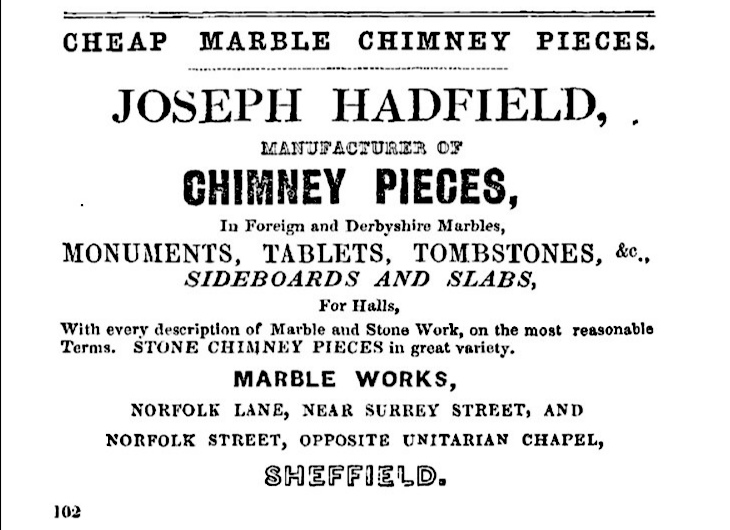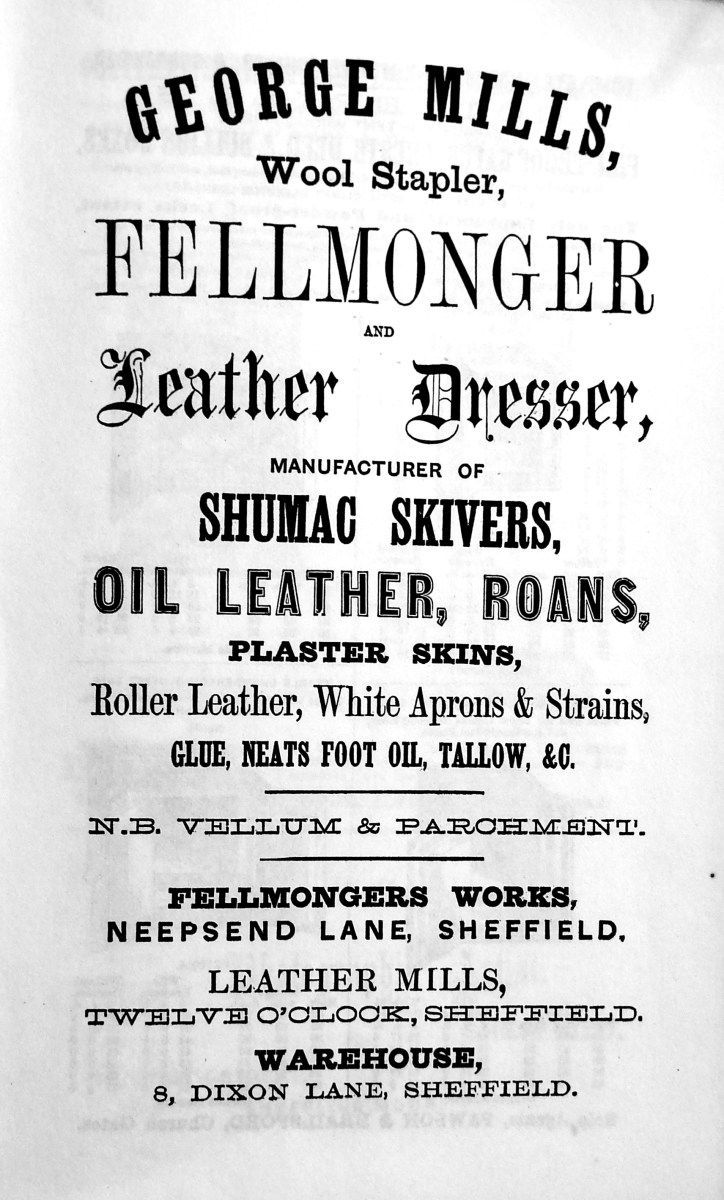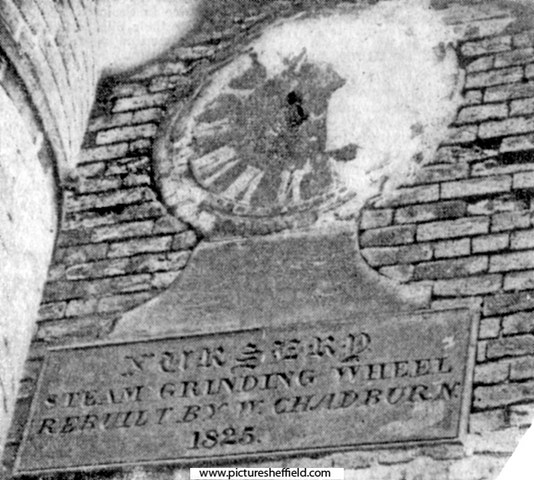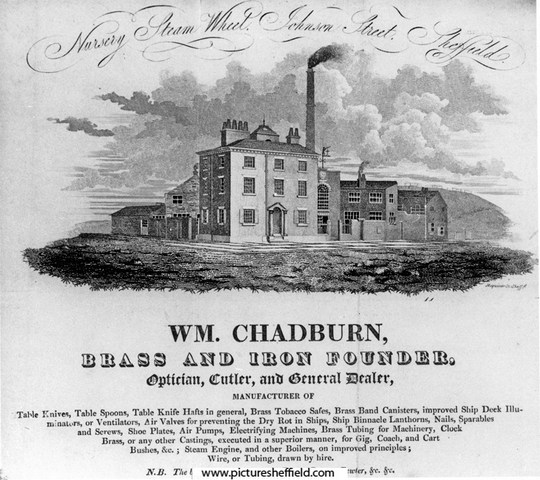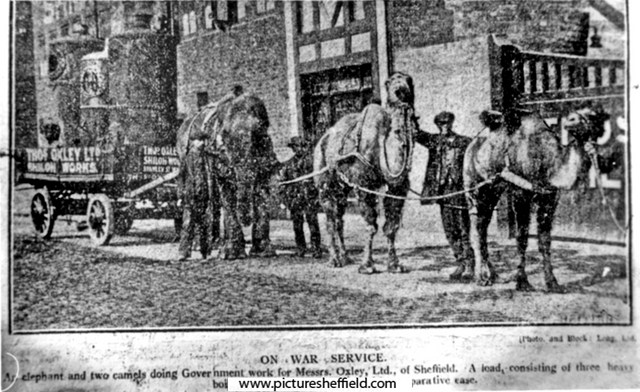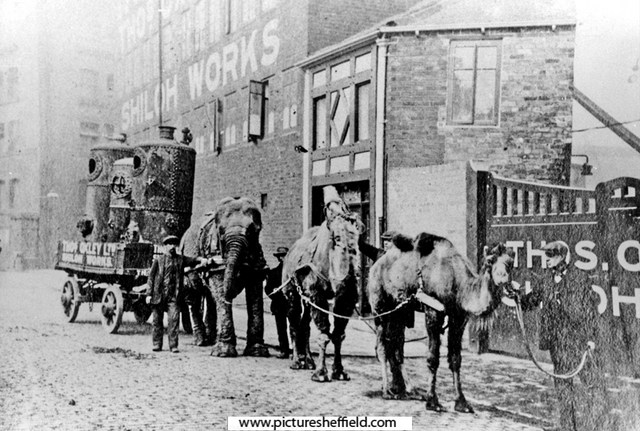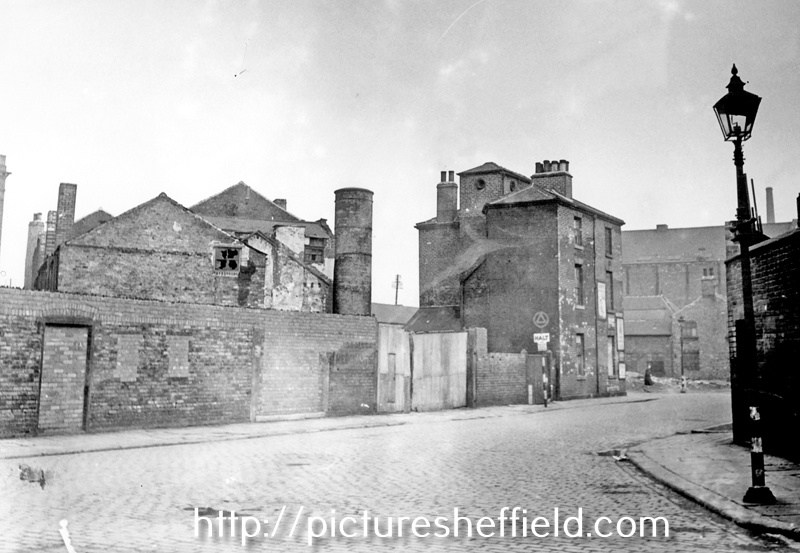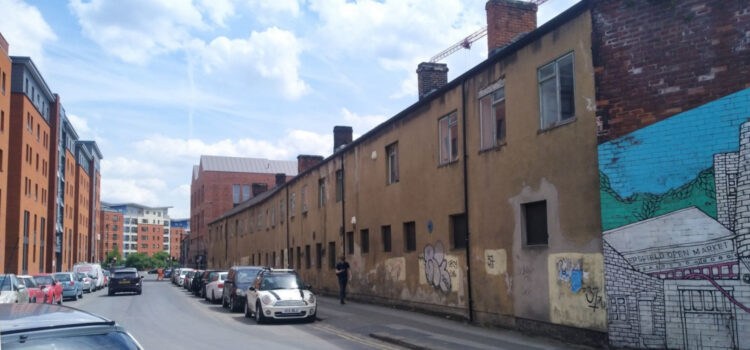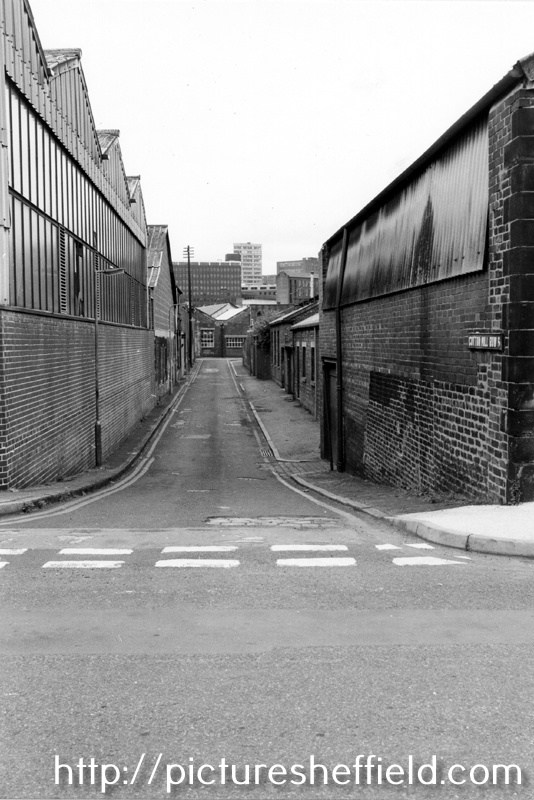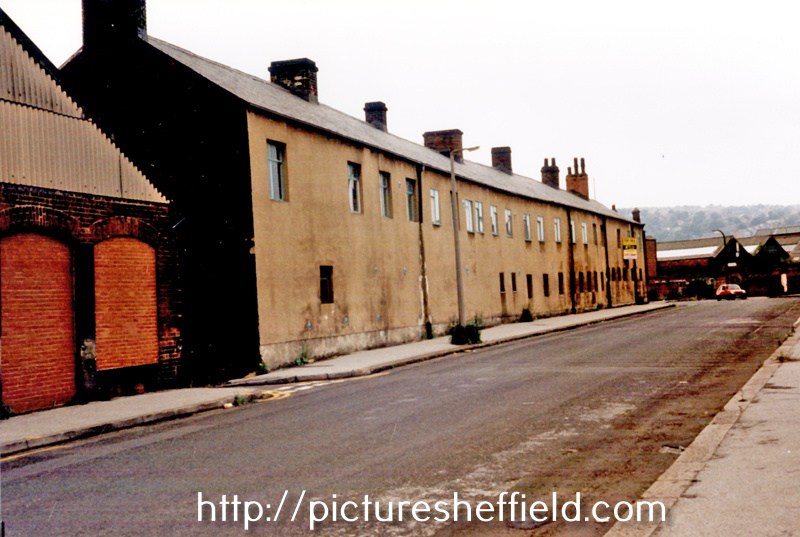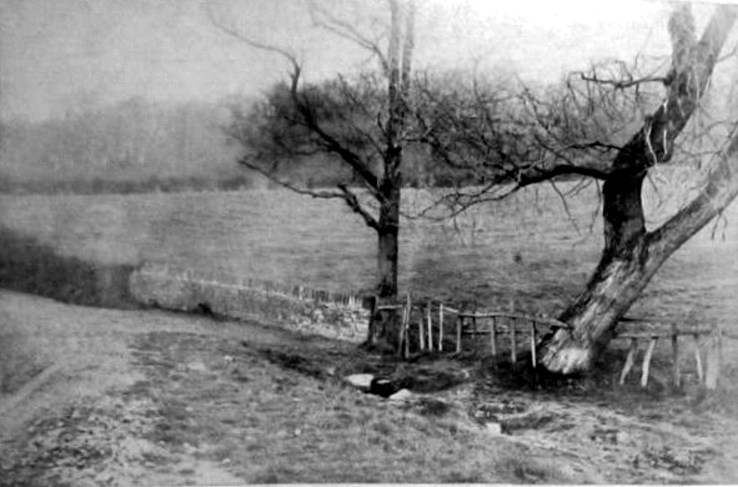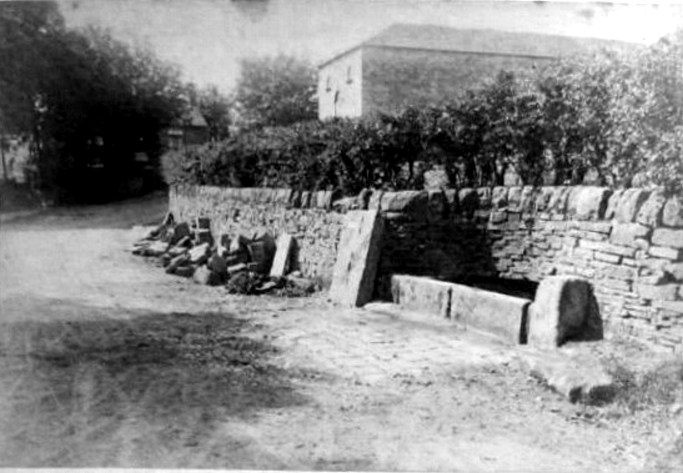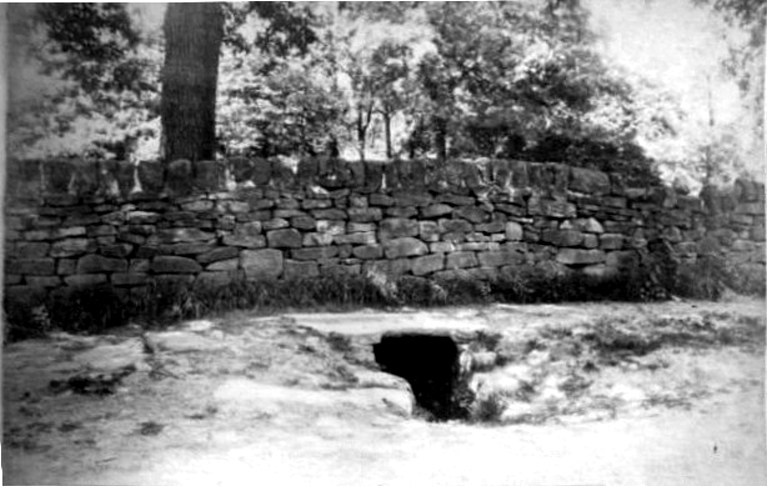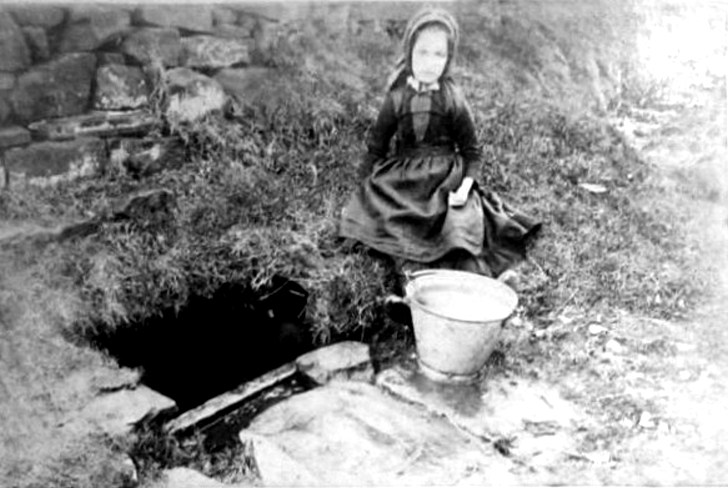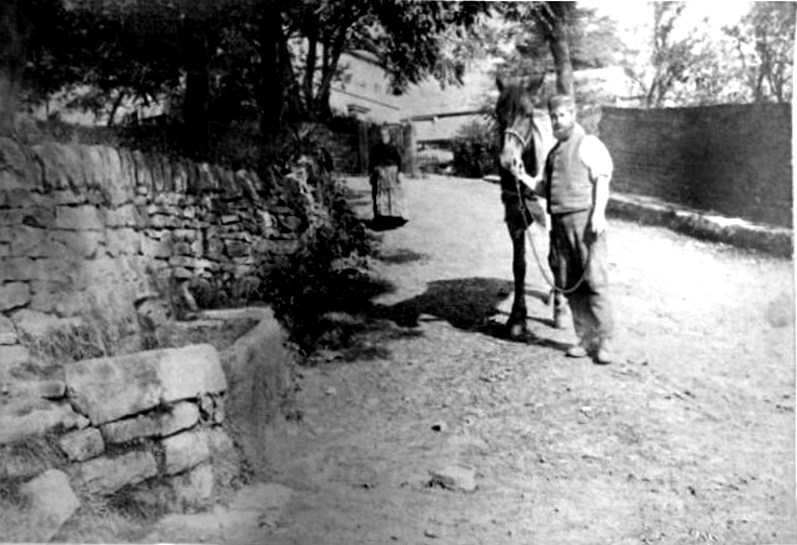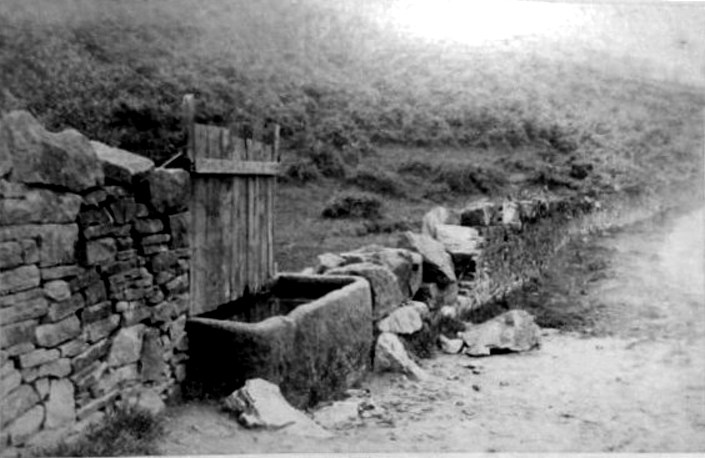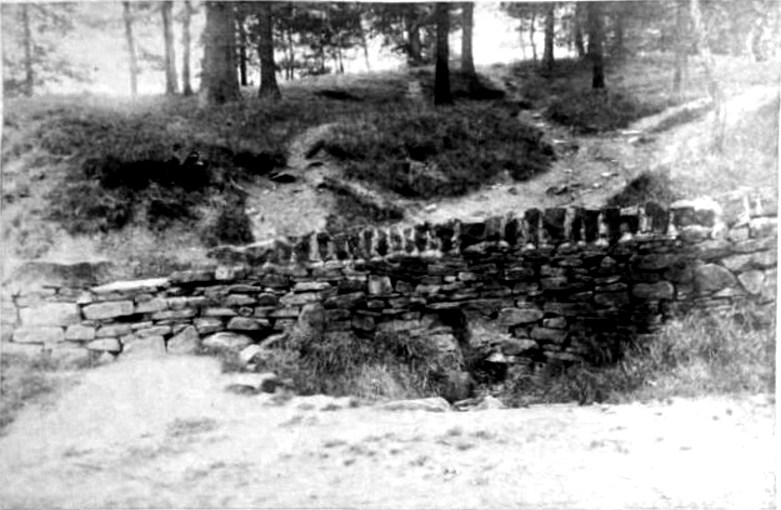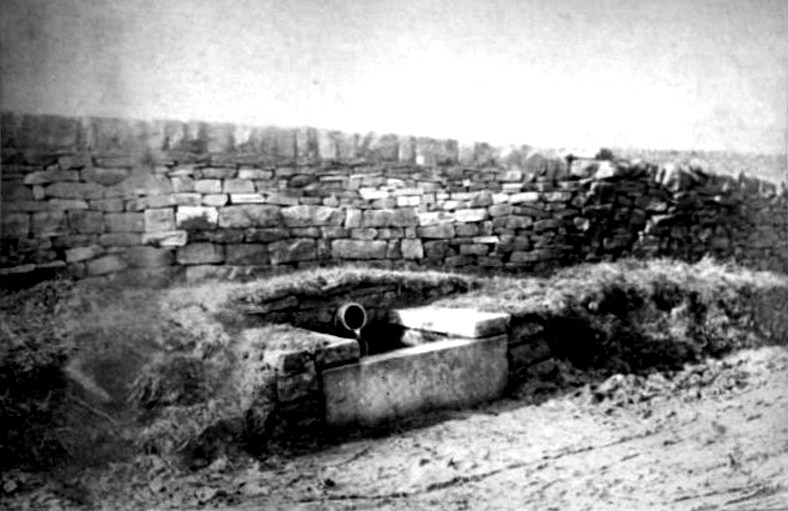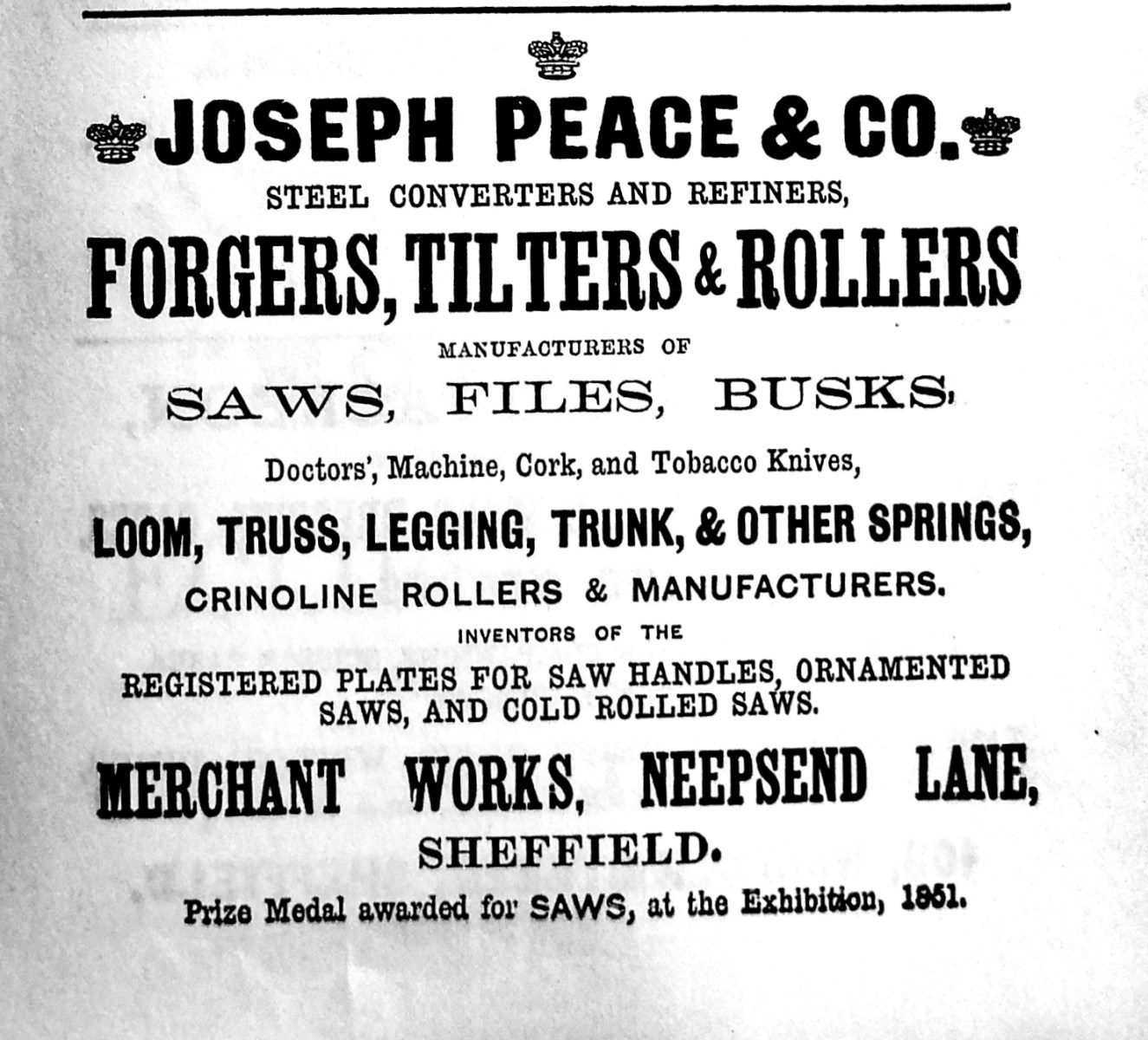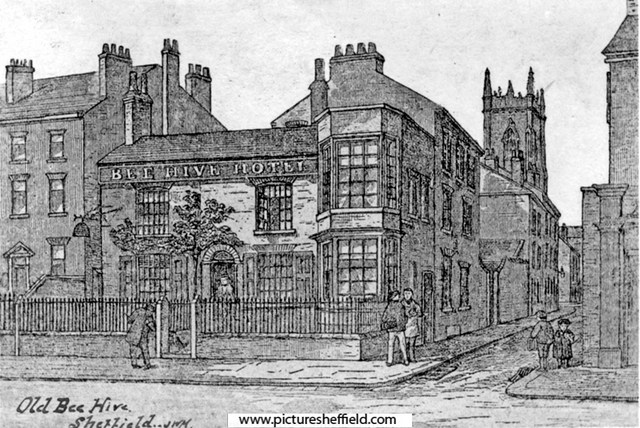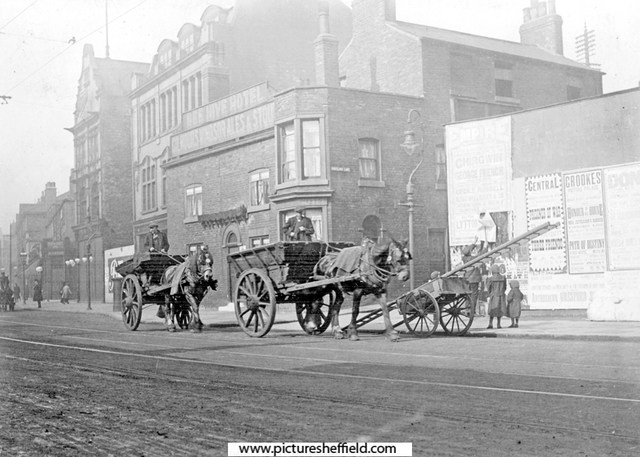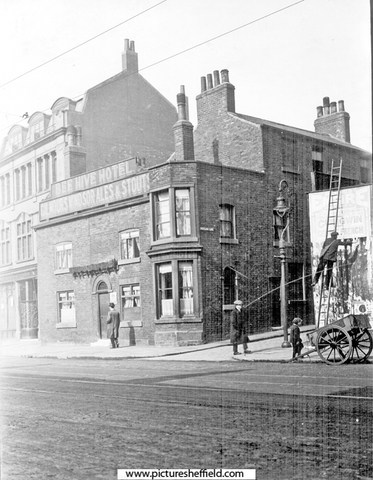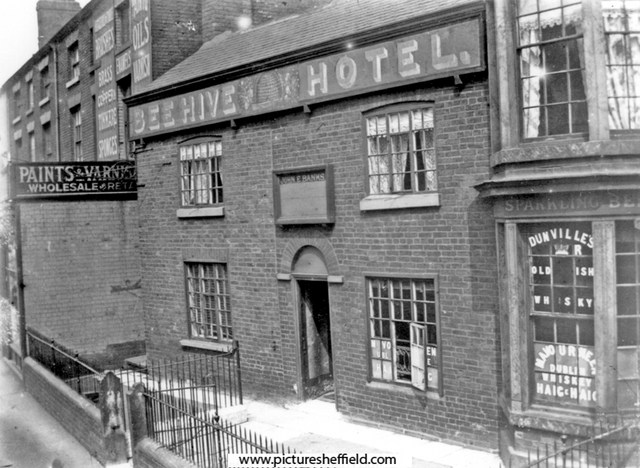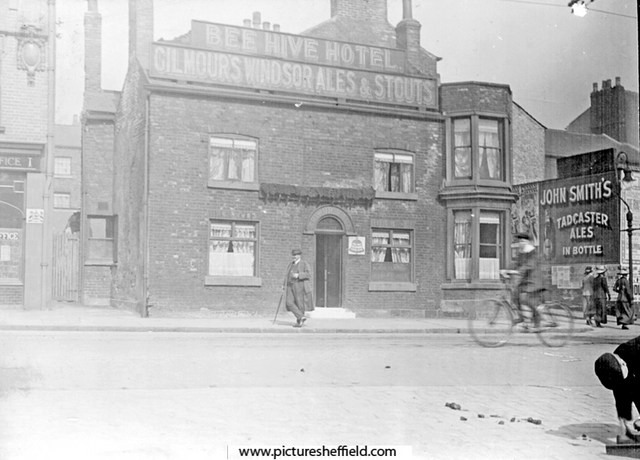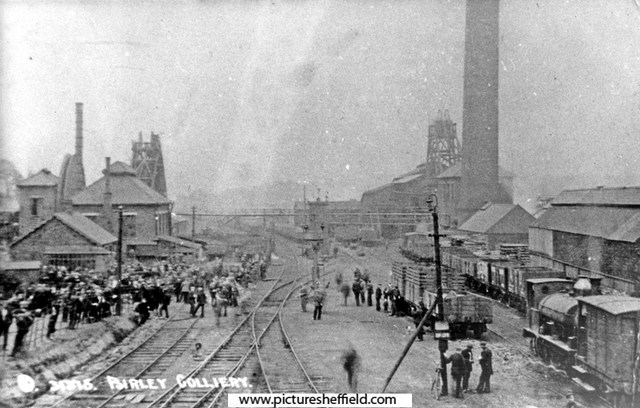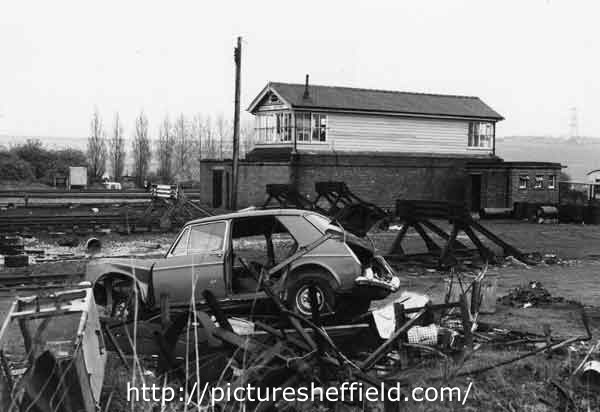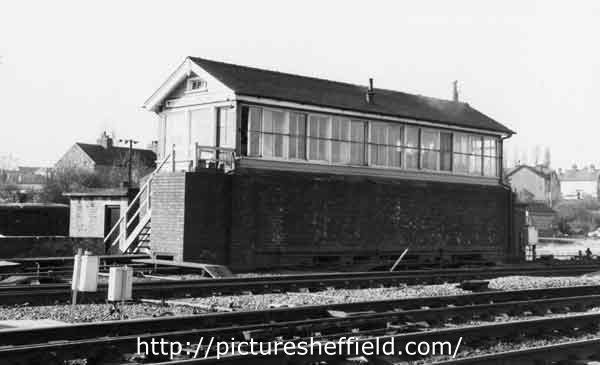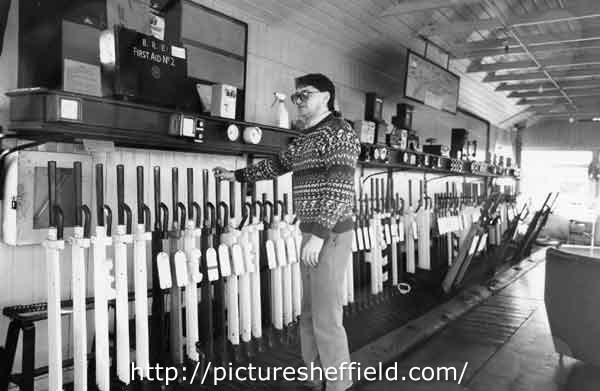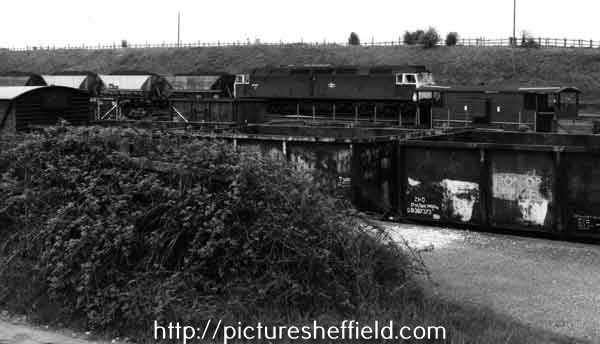Search the Community
Showing results for 'coal pit lane'.
-
8th January 1849 Widening of Snighill, by removal of old projecting property, commenced. Similar improvements made by the Town Trustees in Trippet Lane, Silver Street Head, Coalpit Lane and Gibralter Street.
-
Not always. Many collieries had their own staithes, but then other collieries had rail loading facilities. Wagons are often shunted and spend time in sidings awaiting the next train, boats keep going. Large consumers or merchants may have a private basin, then again they may have a rail connection. You'd need to know the detailed provision for each trip to get an idea of speed. The document is dated 1800-1850, but the start date is way too early, the S&D opened in 1825 and the L&M five years later so what the earliest rail to Sheffield was I don't know. At that early date what speed did railways operate at? Finally, coal does not deteriorate in the timescales we are talking about so does speed matter at all? 30 miles is a day's canal journey, but then add lockage time, may be a couple of days.
-
Hi, I am looking for photos of Water Lane, Sheffield. Preferably around the period 1860 -1900, I would be most grateful for any information. Many Thanks Anthony
-

Dixon Lane, bridge over the river.
Ponytail replied to Roger Stevenson's topic in Sheffield History Chat
The Canal Basin measured for the Duke of Norfolk, with the line of Exchange Street plotted, [1817] https://www.picturesheffield.com/frontend.php?keywords=Ref_No_increment;EQUALS;arc04186&pos=50&action=zoom&id=104945 Marked: The Wicker, Blonk Street, Ladys Bridge, weir, River Dun [River Don], intended bridge [Blonk Bridge], Wain Gate, Town Hall, Castle Hill, Castle Street, Castle Folds, Hay Market, Tontine [Tontine Inn], Dixon Lane, Sheaf Bridge, River Sheaf [intended bridge], Broad Steet, hospitals and chapel [Shrewsbury Hospital], shuttle, warehouses, [canal] Basin, Soap House. Plan of Sheffield Castle about 1700 (1706?) drawn in the 1930s https://www.picturesheffield.com/frontend.php?keywords=Ref_No_increment;EQUALS;y09509&pos=56&action=zoom&id=64229 A plan of the House, Croft, etc. near the Hospitals held under the Duke of Norfolk by George Crook, containing in all 3a [acres], 3r [rods], 3p [perches] 1769. https://www.picturesheffield.com/frontend.php?keywords=Ref_No_increment;EQUALS;arc03384&pos=61&action=zoom&id=98620 Land between Broad Street, the River Sheaf and South Street. Crookes [Crook's] Croft, on the west bank of the Sheaf, south of the Shrewsbury Hospital; new Coal Road marked, with acreage taken for it; buildings, summer house and well; acreage of the whole. Coloured, on parchment. (Sheaf Lane, Sheaf Street, Granville Hill, South Street, Shrewsbury Hospital) -
Parker's Lane car park, which is on the corner of Whitham Rd and Parker's Lane, to the right of the Nottingham House pub, also has an area of grass with mini stone terracing for sitting on (I presume). There are also garden gateposts (see pic) with fairly recent railings with inlays which have various items embedded such as open razor, fork etc. Does anyone have any info on all or parts of this site ? If the gates led to a house it would be approximately numbered between 160-140 Whitham Rd. Cheers.
-

Old Sheffield tram routes - bit of confusion !
Edmund replied to Roger Stevenson's topic in Sheffield History Chat
The Sheffield Corporation Act of 1900 gave powers for a number of tram routes to be constructed, some of which were never followed up. One of these was the route from the junction of Cemetery Road and Washington Road, along the upper part of Cemetery Road and Psalter Lane to Banner Cross, with a link along Cowlishaw Road and Junction Road to Hunters Bar. Discussion of this progressed as far as a proposal in May 1900 to pave Cemetery Road in granite when the tram lines from Washington Road to Sharrow Head were laid. During 1908 Psalter Lane residents held meetings against the proposed extension, they said that the existing Ecclesall and Nether Edge services were adequate and that Psalter Lane was the only main route out of Sheffield unspoiled by tramcars. There were calls in council meetings to veto the extension, for which authorisation had been renewed in a 1907 Act, and in 1909 the plan for this extension was abandoned. By then the Corporation were trialling motor buses for new routes, for which they had received the authorisation in 1907 . The electricity supply system was initially shaped by the huge requirements of the tramways. In 1902 the Sheaf Street power station was changed over to 50Hz generation, more suitable for lighting. In 1904 the Neepsend power station came into use. -
Not sure how these plans help but anything I find mentioning Golden Cross I'll post. A map of a Close belonging to the Duke of Norfolk now subdivided into gardens, and late under Lease with the Golden Cross in Sheffield. 1777. https://www.picturesheffield.com/frontend.php?keywords=Ref_No_increment;EQUALS;arc03127&pos=4&action=zoom&id=98112 The second close as shown in ACM/MAPS/SheS/1532a, now entirely divided into gardens; numerical list with tenants names, descriptions and measurements; both these closes may be seen also on ACM/MAPS/SheS/1534. Shows 'Burying ground of the people called Quakers'. Also shows the proposed route of Garden Street. Original at Sheffield City Archives ref. ACM/MAPS/Shes/1533L. A plan of the Ground and Tenements in Campo Lane the property of the Duke of Norfolk, formerly let with the Golden Cross, containing in all 1,080 yards. 1777. https://www.picturesheffield.com/frontend.php?keywords=Ref_No_increment;EQUALS;arc03117&pos=3&action=zoom&id=98098 Surveyor: William Fairbank II. This plan supplements ACM/MAPS/SheS/1581, showing in detail the tenements at the point later to be the junction of Vicar Lane with Campo Lane; tenants; buildings named. (south side of Campo Lane; Hawley Street, Lee Croft). Original at Sheffield City Archives: ACM/MAPS/SheS/1576s.
-
can anybody remember the chippy on Lydgate Lane on the cross roads,next to the Hallamshire pub,best fish/chips for miles
-

For Reasons Which Will Become Apparent Eventually ...
Ponytail replied to RichardB's topic in Sheffield Genealogy
Plan of the corner of Balm Green and Blind Lane, measures taken in Balm Green to fix the line of Division Street where it will pass through the Towns' property; sketch showing the street after the demolition of the old Town property, [1792], 18. https://www.picturesheffield.com/frontend.php?keywords=Ref_No_increment;EQUALS;arc04094&pos=301&action=zoom&id=103509 Three plans pasted together. Shows Division Street, Coalpit Lane, Blind Lane and Balm Green. Tenants / owners marked: Thomas Sayles, Thomas Bennett, John Smith, Edward Brownell, Edward Harrison, Thomas Bennett, Sarah Potter, John Beavans, Timothy Millington, late Sephton, now Thomas Marshall. An outline of the land between Barker's Pool and Church Street, with Brelsforth's Orchards coloured green, 1804. https://www.picturesheffield.com/frontend.php?keywords=Ref_No_increment;EQUALS;arc04039&pos=123&action=zoom&id=103300 Leopold Street, Balm Green, Orchard Lane and Fargate shown (but not labelled). Refers to S. A. Younge, furnace, James Creswick, Jonathan Moor, Malin Gillott and others, Allen and White, Richard Ibberson, Edward Brownell, Christopher Oates, Edward Adamson, Thomas Maxfield and others, Thomas Sayles's freehold, Thomas Bennett, John Smith, Town Land, John Brookes, Sarah Potter, Barkers Pool, John Lindley's freehold, Duke of Norfolk - given in exchange to the To-- [Josep Holland?], George Woollen, William Pavell, Samuel Younge, Rose, Charles Milner, John Jenning, - Webster, William Rowley and tenements and ground proposed to be taken by E? Brook [Brookes?]. Photographs Date Period:1900-1919 Cottages at Balm Green, site of City Hall, on the left are the furnaces of the Queen Steel Works belonging to John Lucas, iron and steel merchant on Holly Street. 1900.s00689 Balm Green, including F. Oldale and Co., joiner and undertaker, No 2 Balm Green. s13218 Fred Oldale (1878-1940) appears on censuses as journeyman joiner until the 1921 census when he is recorded as a joiner and undertaker in the employ of Robert Moss a joiner, builder and undertaker. Robert Moss is listed in Whites 1901 directory at Balm Green as a joiner, builder and undertaker. Balm Green from Holly Street. s19361 Artists Impression of the Cottages at Balm Green, site of City Hall. Entrance to Court No 4, left. Furnaces in the background belong to the Queen Steel Works belonging to John Lucas, iron and steel merchant on Holly Street. 1876.s13220 W. Topsham, Artist. Partly demolished row of buildings known as Pool Place, Barker's Pool (later the site of the City Hall). Former premises include New Music Hall Tavern, No 116, Barker's Pool, on corner. s00243 Shops on Barkers Pool known as Pool Place, prior to demolition in preparation for the War Memorial, note the 'Iron Man' Public lavatory. Holly Street, left. 1923. s00374 Barkers Pool, later site of City Hall, looking towards housing on Balm Green. Houses on right front Court No. 2. 1927.y01592 Balm Green from Division Street. Court No. 4 left (note sign for Robert Moss, joiner and undertaker), Court No 2, right (behind wall)y01403 Photograph shows Grand Hotel in process of building. Balm Green was behind Barkers Pool on site of City Hall. The sign of a joiner and undertaker shows the name R. Moss. Prior to this, Robert Moss, whose residence was at 16 Monmouth Street, owned the Wentworth Temperance Hotel in Holly Street, where the Grand Hotel later stood. Robert Moss had one son and a daughter. He had a lifelong connection with Bethel P.M. Chapel in Cambridge Street and was choir master and Sunday School Secretary for many years. At the Anniverary Services he often entertained the members of the voluntary instrumentalists who accompanied the singing, to dinner and tea between the services at the Wentworth Hotel, being near to the Chapel. John Charles Pound (c.1833-1918), Superintendent of Fire Brigade, c.1870 s08453 Pound was born in Sittingbourne in Kent c.1833. In the 1850s he was a fireman at Lambeth. He relocated to Sheffield c.1870. In the 1880s he was living at Balm Green with his wife and seven children. His first two children were born in Surrey – the remainder in Sheffield. During his time at Sheffield he applied to join Birmingham and Glasgow fire services but presumably was unsuccessful. He resigned from the Sheffield Fire Service in September 1895. He died on 25th October 1918 and was buried in the Sheffield General Cemetery. Advertisement for W. H. Tyas, general tinsmith and sheet metal worker, Nos. 1-2 Balm Green. 1916. y05257 Image from Sheffield Telegraph Year Book 1916 (page 110) (Local Studies 032.74 S). -

Henry Atkin & Co., Saw, Files etc, Merchants and Manufacturers, Celtic Works, Union Lane
Ponytail posted a topic in Made In Sheffield
Henry Atkin & Co., saws, files etc., merchants and manufacturers, Celtic Works, Union Lane, Duke Street. Advertisement from Illustrated Guide to Sheffield, Pawson and Brailsford 1862. Whites Directory 1852 Is Henry part of this partnership? Atkin, Rutter and Pask, saw and machine knife manufacturers, Matilda Street. Atkin, William, saw manufacturer, (Atkin, Rutter & Pask.) h. Hemsworth. Pask, John, saw manufacturer (Atkin, Rutter & P) h. Hillfoot. Rutter, Alexander, saw manufacturer. (Atkin, Rutter & Pask) 35 Regent Street. (Alexander Rutter of Sarah Street, made a Flood Claim for loss of wages working for Drabble & Sanderson, saw manufacturers, Russell Street) https://sheffieldfloodclaimsarchive.shu.ac.uk/claimSummary.cfm?claim=6-5051 Whites Directory, 1856 Atkin, Henry, saw manfr, (Atkin and Peace) h. Lightwood, Norton. Atkin and Peace, saw and machine knife etc., manufacturer, 32 Union Lane. Whites Directory 1857 Atkin & Peace, merchants, steel & saw, file etc. manufacturers, Union Lane. Atkin & Peace Advertisement 1858 https://www.gracesguide.co.uk/Atkin_and_Peace Advertisement Melville Directory 1859 y03117 Atkin and Peace, Celtic Works Whites Directory 1862 Atkin, Henry, saw, file & steel manufacturer, Union Lane, 169 Arundel Street. Advertisements 1864, 66 & 69 https://www.gracesguide.co.uk/Henry_Atkin_and_Co Whites Directory 1879 Atkin, Henry, (Henry & Hancock) h. 51 Earl Street. Atkin, Henry & Hancock, manufacturers of saws, files, machine knives etc. Celtic Works, Union Lane Advertisement from Whites Directory 1879 Advertisement 1882 Atkin & Hancock https://www.gracesguide.co.uk/Atkin_and_Hancock Wondered if they're is any information on the partnerships, when dissolved or any other information about Henry Atkin. -
Map showing the position of the Cleakam (Cleakham) Inn, above Green Lane near to Morton Wheel. Not to be confused with Cleakum Inn at Malin Bridge. Plan of lands in dispute between the townships of Sheffield and Nether Hallam describing them as they were in the year 1783 according to a survey thereof made by the late William Fairbank of Sheffield. Dated 1826. https://www.picturesheffield.com/frontend.php?keywords=Ref_No_increment;EQUALS;arc03895&pos=2&action=zoom&id=97344 The ground concerned includes Upperthorp [Upperthorpe], Port Mahon, Nether Thorp [Netherthorpe] and the land between White House Lane (Infirmary Road) and Morton Wheels. Includes John Addy's house, Lidgate Field, Shales Moor Close, White House Lane or Walkley Road, Penistone Turnpike Road, old road from Owlerton to Sheffield, Green lane, Cleakam Inn, Morton Wheel and Morton Wheel Dam, River Dun and Bacon's Island etc. Cornish Street was previously known as Cleakham Wheel Road. A plan of the building lot in Cleakham Wheel Road [Cornish Street] taken of Thomas Shepherd by Henry Ibbotson. 1823. https://www.picturesheffield.com/frontend.php?keywords=Ref_No_increment;EQUALS;arc04196&pos=6&action=zoom&id=105072 Globe Works shown. Sheffield History A-Z Public Houses List: Cleakham Inn, Cornish Place. Open 1800 Closed Span Comments: open circa 1800; 1822 Cleakem Inn, Green Lane 1822 Amelia Facey/Faser/Fraser 1825 Thomas Hobley According to Michael Liversidge in his book "The definitive A-Z listing of Sheffield Public Houses. "...the only known fact was that the landlord was the owner of a bowling green, which was attached to the Cleakham. A Thomas Hobley or Thomas Copley was the landlord in 1839."
-

Joseph Hadfield, Marble Mason, Norfolk Lane Marble Works
Ponytail posted a topic in Made In Sheffield
Joseph Hadfield, marble mason. Norfolk Lane Marble Works. Advertisement from Illustrated Guide to Sheffield, Pawson and Brailsford. 1862. Whites Directory 1849 Hadfield, Joseph, marble mason and chimney piece monument etc. manufacturer, 3 Norfolk Lane h. 50 Suffolk Road. Advertisement Whites Directory 1852. Whites Directory 1852 Hadfield, Joseph, statuary, marble mason and chimney piece, monument etc. manufacturer, 3 Norfolk Lane. h. William Square. Advertisement Melville Directory 1859 https://www.picturesheffield.com/frontend.php?keywords=Ref_No_increment;EQUALS;y03129&pos=6&action=zoom&id=50021 Whites Directory 1862 Hadfield, Joseph, marble mason and chimney piece and monument etc. manufacturer, 3 Norfolk Lane. h. 8 Eyre Street. Hadfield, Jas marble mason, 37 Charles Street. Advertisement from Drakes Directory 1862 Whites Directory 1879 Hadfield, Joseph, sculptor and marble mason, 8 Eyre Street and 3 Norfolk Lane. Marble Headstone in Sheffield General Cemetery, Joseph Hadfield of Marble Works, Eyre Street, died 1888 & wife Harriet 1889, https://www.picturesheffield.com/frontend.php?keywords=Ref_No_increment;EQUALS;a00581&pos=1&action=zoom&id=89883 https://www.picturesheffield.com/frontend.php?keywords=Ref_No_increment;EQUALS;a00582&pos=2&action=zoom&id=89884 Dining Room at Endclffe Hall with chimney piece made of marble and bronze, supplied by Joseph Hadfield, Norfolk Lane Marble Works. https://www.picturesheffield.com/frontend.php?keywords=Ref_No_increment;EQUALS;s05550&pos=3&action=zoom&id=8938 -
 George Mills, fellmonger & leather dresser, Fellmongers Works, Neepsend Lane; Leather Mills, Twelve O'Clock & Warehouse, No. 8 Dixon Lane. Advertisement from Illustrated Guide to Sheffield, Pawson and Brailsford. 1862 1852 Directory Mills, George, Spanish, Morocco and oil leather dresser and vellum and parchment manufacturer. 8 Dixon Lane and Walk Mill Mills, Samuel, fellmonger & leather dresser, New Market & Neepsend A source to explore... Folded vellum document Queen Victoria Royal Seal Probate Wakefield. George Mills, fellmonger of Sheffield, Will dated 4th November 1861, testate date 4th September 1865. Will proved Wakefield 7th October 1865 https://www.chiltonbooks.online/product/2739571/Probate-of-the-Will-of-George-Mills-Sheffield-Yorkshire
George Mills, fellmonger & leather dresser, Fellmongers Works, Neepsend Lane; Leather Mills, Twelve O'Clock & Warehouse, No. 8 Dixon Lane. Advertisement from Illustrated Guide to Sheffield, Pawson and Brailsford. 1862 1852 Directory Mills, George, Spanish, Morocco and oil leather dresser and vellum and parchment manufacturer. 8 Dixon Lane and Walk Mill Mills, Samuel, fellmonger & leather dresser, New Market & Neepsend A source to explore... Folded vellum document Queen Victoria Royal Seal Probate Wakefield. George Mills, fellmonger of Sheffield, Will dated 4th November 1861, testate date 4th September 1865. Will proved Wakefield 7th October 1865 https://www.chiltonbooks.online/product/2739571/Probate-of-the-Will-of-George-Mills-Sheffield-Yorkshire -
Plan of the Queen's Foundry, Queen Street and premises adjoining in Sheffield. 1842. https://www.picturesheffield.com/frontend.php?keywords=Ref_No_increment;EQUALS;arc04225&pos=4&action=zoom&id=105209 Marked: Model warehouses, stable, stable loft, manure, old warehouse, shed, smiths and joiners shops, foundry, boring and turning mil, engine house, dwelling house, ash pit, privy, reservoir, counting house, fetling shops, sand and core shed, fitting shops, model and lumber rooms, and furnaces. Wardle & Bentham 1814-1815 Iron founders & Masters Darwin & Co., Queens Foundry, Chapeltown, Elsecar & Worsbrough. General & Commercial Directory of Sheffield. 1825. Darwin & Co. mill & engine work in all of its branches, Queens Foundry, Queen Street. White's General Directory 1849. Darwin & Co, New Queen Street, iron founders; stove grate; mill and engine work manufacturers, Queens Foundry, New Queen Street. Thomas Darwin, iron founder & etc. h. 77 Occupation Road. Whites Directory 1852. Darwin & Co. iron founders; stove grate; engine and mill work manufacturers, Queens Foundry, 68 New Queens Street. Thomas Darwin, iron founder & etc. h Handsworth. Whites Directory 1862 Darwin & Co. iron founders & stove Grate & etc manufacturers, Queens Foundry 68 Queens Street. John Darwin, public weighing machine proprietor, 68 New Queen Street. Samuel Darwin, iron founder & Co. (Darwin & Co) h. 8 Hanover Square. Thomas Darwin, iron founder & etc., h. Blenkarn Place, Rock Street. White's Directory 1872 . Darwin & Co. engineers, millwrights, iron founders; general stove grate manufacturers; silversmiths; coppersmiths; tinner brazier tool manufacturers, 98-108 Queen Street. Thomas Darwin, (D & Co) h. 99 Rock Street. Which Queen? Thought it would be Queen Victoria until discovered it was named Queens Foundry earlier. Probably Queen Charlotte wife of George III. Queen, 8th September 1761-17th November 1818. Crowned. 22nd September 1761.
-
A plan of the Cutler's Steam Grinding Wheel with the small tenements and vacant ground adjoining the same situate in the Nursery, Sheffield. 1822. By John Leather, land surveyor. https://www.picturesheffield.com/frontend.php?keywords=Ref_No_increment;EQUALS;arc04148&pos=10&action=zoom&id=104078 Marked: Spital Hill, Stanley Street, Johnson Street, Andrew Lane, engine yard, smiths sop, boilers, geering [gearing?], engine house, proposed mill, tenement and sough from the river. Nursery Steam Grinding Wheel also known as Shiloh Works. Advertisement for William Chadburn, Brass and Iron Founder, Nursery Steam Wheel, junction of Stanley Street (left) and Johnson Street. Works also known as Shiloh Works. 1828. s10911 Taken from Blackwell's 1828 Directory of Sheffield. Undated newspaper cutting. On the Johnson Street side of the Shiloh Works in Stanley Street, Sheffield is this interesting old tablet. The inscription reads: "Nursery Steam Grinding. Rebuilt by W. Chadburn, 1825." Above there are the remains of a clock dial. s09994 Situated on the Johnson Street side of the Shiloh Works (main entrance off Stanley Street). Refers to William Chadburn, Brass and Iron Founder. Sheffield Flood Claim. Alfred Chadburn, Steam Grinding Wheel Proprietor. Wood Bank, Burngreave Road, Sheffield, for Claim as Owner for damage & loss of rents at the Nursery Steam Grinding Wheel. https://sheffieldfloodclaimsarchive.shu.ac.uk/claimSummary.cfm?claim=1-1210 James Thorpe. horn cutter, Chadburns Wheel, Sheffield living at 36 Fitzallan Street. https://sheffieldfloodclaimsarchive.shu.ac.uk/claimSummary.cfm?claim=4-3629 Henry Palmer, wood turner, Chadburns Wheel, Stanley Street, Sheffield. https://sheffieldfloodclaimsarchive.shu.ac.uk/claimSummary.cfm?claim=6-5046 Sarah Kenworthy, Administratrix of George Kenworthy, late Number 11 Nursery Lane, spinster living at Mr. Chadburn's, Nursery Street; late Number 11 Nursery Lane. https://sheffieldfloodclaimsarchive.shu.ac.uk/claimSummary.cfm?claim=6-5352 Sarah Kenworthy of Nursery Street Administratrix of George Kenworthy late of No.11 Nursery Lane. Claim for the child of late George Kenworthy. https://sheffieldfloodclaimsarchive.shu.ac.uk/claimSummary.cfm?claim=9a-100 The claim suggests George Kenworthy died as a result of the Flood; however he isn't on the list of named dead published in "The Great Flood at Sheffield" Did he die because of complications afterwards or is he an omission to the published list? Employees at Chadburns Wheel, Nursery had their Claim for loss of wages dismissed. John Gormley, spring knife cutler of 8 Bate's Square. https://sheffieldfloodclaimsarchive.shu.ac.uk/claimSummary.cfm?claim=1-1224 John Mason, spring knife cutler of 113 Hammond Street. https://sheffieldfloodclaimsarchive.shu.ac.uk/claimSummary.cfm?claim=1-1227 James Allender, spring knife cutler of 4 Furnace Hill. https://sheffieldfloodclaimsarchive.shu.ac.uk/claimSummary.cfm?claim=1-1228 On War Service for Thomas Oxley Ltd., Shiloh Wheel, Stanley Street. 15th April 1916. s09993 Sheffield Telegraph 15/04/1916 (See also Sheffield Independent for same date) An elephant and two camels doing Government Work for Messrs. Oxley Ltd. of Sheffield. A load consisting of three heavy boilers is being drawn along with comparative ease. Shiloh Works were at Shiloh Wheel also known as Nursery Steam Grinding Wheel see Directory 1919-20. s00065 Thomas Oxley Ltd. https://hawleysheffieldknives.com/n-fulldetails.php?val=o&kel=1319 Stanley Street from Spital Fields, showing old works formerly known as Nursery Steam Grinding Wheel also known as Shiloh Works. Johnson Street in background. 10th June 1943. u02690 Johnson Street from Stanley Street, showing old works formerly known as Nursery Steam Grinding Wheel also known as Shiloh Works. Occupied at time of photograph by Strongs British Twist Drill Ltd & No 27, Johnson Street, Grocers (on left). 10th June 1943. s17536 Photographer: Estate Surveyors Department.
-
The Cotton Mill replaced an earlier Silk Mill of about 1760 which burned down 1792. After a fire in 1828 the Cotton Mill was converted to Sheffield Workhouse, part of which was utilised as a hospital for the Cholera epidemic 1832 and Sheffield Flood of 1864. William Bower leased the former named Kelham Wheel, building a Silk Mill sited to the south east of the original wheel, taking water through a secondary channel diverging from Kelham head race. Featured on 1771 Town Map of Fairbank and in more detail drawn to accompany the lease of 1773. Only functioning briefly, as Bower was declared bankrupt 1774. Plan of the ground and tenements about the junction of Spring Croft, Bower Spring Lane and the road from the Silk Mill. Surveyor: William Fairbank II. 1783. https://www.picturesheffield.com/frontend.php?keywords=Ref_No_increment;EQUALS;arc03040&pos=1&action=zoom&id=96210 A small lot between Spring Croft and the proposed Back Lane (Love Lane) 1774 the Silk Mill was converted to a Cotton Mill when Wells, Heathfield & Co. took a 21 year lease. Built on either side of the secondary race, incorporating the abandoned cutlers wheel. A valuation survey describes a water wheel 19ft diameter and 21ft wide, producing power adequate enough for 70 cutlers troughs. Fire damaged in 1792 and running again by 1794. The map of 1805 is the rebuilt second mill. Spring Street. Colson Crofts measured for the Duke of Norfolk, including the Cotton Mill, the Steam Engine Grinding Wheel, and T Holy’s land laid out in streets. 1805. https://www.picturesheffield.com/frontend.php?keywords=Ref_No_increment;EQUALS;arc04089&pos=19&action=zoom&id=103413 Shows: Cotton Mill Co., goight to footbridge, Cotton Street, Bower Street, north side of an ancient cut of fish pond, Spring Street, Water Street, Pear Street, Plum Street, Love Street, Engine Street (changed to Steam Street) and steam engine grinding wheels. The Cotton Mill was operated by Water Power until after another fire August 1810 when steam power was introduced. The freehold was sold in 1815, showing there were two Cotton Mills, the steam powered one the Silk Mill site (becoming the Workhouse in 1828) and a smaller water powered mill, converted from the Kelham grinding wheel, also housing a 20hp. Boulton & Watt steam engine. Kelham Wheel reverted to being a grinding wheel. For more information about Kelham Wheel see: "Water Power on the Sheffield Rivers" edited by David Crossley with Jean Cass, Neville Flavell & Colin Turner. Kelham Street. The Cotton Factory, the Cotton Mill (formerly Kelham Wheel) etc. in lots for sale, 1815. https://www.picturesheffield.com/frontend.php?keywords=Ref_No_increment;EQUALS;arc04087&pos=18&action=zoom&id=103381 Shows: Spring Street, Bower Street and Spinning Street. Also marked: engine, boiler, cotton mill (formerly Kelham Wheel), store, wash, nine dwelling houses, large cotton factory, palisades, counting house, two dwelling houses, kitchen, roller shop, iron turners shop, tinner’s shop, turners shop, millwright’s shop, shed, intended engine, gearing room, engine house, intended boiler, boilers, blowing room, warehouses with picking rooms over them, four houses, ten houses. Former offices of Ibbotson Brothers and Co. Ltd., merchants and manufacturers, Globe Steel Works, Alma Street at junction with Cotton Street. 1986. t01080 William Ibbotson founder of Ibbotson Brothers, steel converters, refiners, manufacturers and worldwide merchants built the aptly named Globe Works (Penistone Road) in 1824. The main building was designed to incorporate a domestic residence. The west wing was residential, the east wing counting houses and warehouses. In 1863 he moved to a site on Cross Smithfield before purchasing the former workhouse on Alma Street which he renamed Globe Steel Works. For more information see: Globe Works by Kim Streets (Sheffield Museums), August 1990. Local Studies Ref: 2867 MP. Cotton Mill Walk off Alma Street. 28th April 2007. https://www.picturesheffield.com/frontend.php?keywords=Ref_No_increment;EQUALS;t03223&pos=4&action=zoom&id=33903 Cotton Mill Walk off Alma Street runs down the side of the Fat Cat public house, formerly The Alma. The original cobbled walkway is still visible (2007) and it turns to the right just before the building in the photograph opening up into what would have been the Court which is now a car park for Kelham Island Industrial Museum. Cotton Mill Walk, from the Court entrance looking towards Alma Street with the Fat Cat public house left and the Globe Steel Works in the background. 28th April 2007. https://www.picturesheffield.com/frontend.php?keywords=Ref_No_increment;EQUALS;t03222&pos=3&action=zoom&id=33899 Cotton Mill Row from Alma Street looking towards Bower Street. 1st August 1985. s25356 Cotton Mill Walk https://sheffielder.net/tag/cottonmill-walk/ Hallamshire Historic Buildings. Remains of Sheffield’s first workhouse and only cotton mill – Cotton Street and 24 Alma Street 22/01020/FUL https://www.hhbs.org.uk/2023/01/28/remains-of-sheffields-first-workhouse-and-only-cotton-mill-cotton-street-and-24-alma-street-22-01020-ful/ Sheffield Wire. Plans to convert Kelham Island cotton mill are destroying the historic character of Sheffield, by Oliver Nunn, Feb 20, 2023 https://sheffieldwire.co.uk/index.php/2023/02/20/plans-to-convert-kelham-island-cotton-mill-are-destroying-the-historic-character-of-sheffield/
-
I think some of these may still exist? Fulwood Head Road. Boundary Gleadless Road. Brookhouse Hill. Opposite Cottages & Chapel Green Lane. Near Wood, Walkley Bank Road. Hagg Lane No. 1. Grange Farm (could be Grange Fm at Norton?). New Trough Roper Hill.
-
Joseph Peace & Co., Merchant Works Neepsend Lane. From Advertisement Illustrated Guide to Sheffield, Pawson and Brailsford 1862 1858 Company Registered 1918 Incorporated in Sheffield Steel Products Ltd. https://www.gracesguide.co.uk/Joseph_Peace_and_Co
-

Auction of Public Houses, Shops, Farm, Dwellings & Land of William Staniforth
Ponytail replied to Ponytail's topic in Sheffield History Chat
Link to: Building on Carter Hall Lane. https://www.sheffieldhistory.co.uk/forums/topic/19823-building-on-carter-hall-lane/ -
Artists Impression of the Bee Hive Hotel, No 240, West Street. Portland Lane, right. St. George's Church in background. The railings were there 1870-1880.s06859 Extract from: Reminiscences of old Sheffield, it's Street and its People. Editor Robert Eadon Leader, from articles and letters in The Sheffield and Rotherham Independent 1872/3. Page 155. "I well remember the time when the house, now enlarged and occupied as the Bee Hive public-house, was built in the cross garden walk (now Glossop Road) just mentioned, which terminated at the top of Broomhall Street. (then called Black Lamb Lane) It was erected by a shoemaker, named Thomas Rose. He was a little man, wore top boots, and kept a hive of bees in the garden beside the house. He got a license for the house and called it the Bee Hive. His pear tree (in the sketch) on the front yet retains enough vitality to show yearly a few leaves. With the exception of the old houses with gardens and palisades at the top of West Street, and the large house in Broomhall Street, beside which until lately the rooks have built, there were, I believe, no houses (except some garden cottages) from Portobello down to Holy Green, and the top of Bright, Gaol, and Young Streets. All the intervening space was occupied with fields and gardens." It was in 1817 that the Town Trustees agreed to lend towards the making of a Turnpike Road from Glossop to Sheffield providing the said road enters the town through West Street. and as the Beehive was earlier than Glossop Road we can fix the date of its erection somewhere in the opening years of the nineteenth century. s00470 Photographer: B E Drury There was also stabling to the rear. Photographs by C H. Lea of the Bee Hive Hotel in 1913.y01684 Night soil carts passing the Beehve Hotel, Portland Lane, right. Night Soil Carts collected the human waste from the Earth Closets, Water Closets (WC's) gradually replaced them. y01682 A Bill Poster on West Street at the junction with Portland Lane; balancing on his ladder across from the Beehive Hotel. y01683 Ordnance Survey Map, sheet no. Yorkshire No. 294.7.25. 1889. Bee Hive Hotel top left. https://www.picturesheffield.com/frontend.php?keywords=Ref_No_increment;EQUALS;q00075&pos=7&action=zoom&id=107161 Bee Hive Hotel, 10th February 1982. https://www.picturesheffield.com/frontend.php?keywords=Ref_No_increment;EQUALS;s21408&pos=3&action=zoom&id=24014 In the 1990s, The Bee Hive was extended and renamed the Foundry and Firkin. No 248, West Street Post Office, (later incorporated into the Foundry and Firkin) https://www.picturesheffield.com/frontend.php?keywords=Ref_No_increment;EQUALS;t09986&pos=3&action=zoom&id=90513
-

Birley Collieries Branch Line
boginspro replied to Paolo Coopio's topic in Sheffield Buses, Trams and Trains
Great stuff, I walked that line many times, in the 50s/60s, from The Red Hills / Birley West site all the way to Birley East but had totally forgotten about that bridge. This brought back many memories of this area but looking it up now is very disappointing. Back then you could learn a lot from the historic remains easily found by just walking around., A friend of mine still lived in the valley below Birley East Pit. Now what looks like indiscriminate planting of so many trees has masked a lot of the history. If I ever get back there I would love to search for some of the remains that I do remember. ----------------------- -
Tapton Court, Shore Lane, Broomhill. Built for John Henry Andrew (1824-1884), steel manufacturer, Toledo Works (J.H. Andrew & Co.) Henry Steel (1832-1915) one of founders of Steel Peech & Tozer lived at Tapton Court 1879-1915. https://sheffielder.net/2020/04/16/tapton-court-a-brass-castle-above-the-fog-of-the-town/ Has further links to: Tapton Court: When the nurses moved in. A brighter future for Tapton Court. Henry Steel. More photographs to view on Picture Sheffield.
-

Birley Collieries Branch Line
Ponytail replied to Paolo Coopio's topic in Sheffield Buses, Trams and Trains
Map of Woodhouse junction area, c. 1855. Includes Green Gate Lane; Birley Vale Branch Railway, Beighton Branch Railway, Manchester Sheffield and Lincolnshire Railway; River Rother; Woodhouse Colliery; Woodhouse Mills; Shirecliffe Brook; Cinderhill Green Road; Furnace Lane, Woodhouse Junction Station; shaft. https://www.picturesheffield.com/frontend.php?keywords=Ref_No_increment;EQUALS;arc02940&pos=40&action=zoom&id=93148 Woodhouse (extract from Ordnance Survey of 1935, revised to 1948) https://www.picturesheffield.com/frontend.php?keywords=Ref_No_increment;EQUALS;y06745&pos=12&action=zoom&id=59925 Derbyshire sheet XII NE and Yorkshire CCXCV. Birley East Colliery, Woodhouses10732 For more information about Birley East Colliery see: Winding Up a History of Birley East Colliery, A Rowles Ref: 622.33 SQ. https://www.picturesheffield.com/frontend.php?keywords=Ref_No_increment;EQUALS;s10733&pos=42&action=zoom&id=13859 Viewed from Hackenthorpe side. https://www.picturesheffield.com/frontend.php?keywords=Ref_No_increment;EQUALS;s10735&pos=44&action=zoom&id=13861 East Birley Pit, late 19th century, view from Sally Clarkes. https://www.picturesheffield.com/frontend.php?keywords=Ref_No_increment;EQUALS;t00216&pos=47&action=zoom&id=31083 -

Birley Collieries Branch Line
Ponytail replied to Paolo Coopio's topic in Sheffield Buses, Trams and Trains
Woodhouse Junction signal box. 1978. https://www.picturesheffield.com/frontend.php?keywords=Ref_No_increment;EQUALS;s41720&pos=45&action=zoom&id=81661 Woodhouse Junction Signal Box.13th May 1981.s41716 The wall at the base was built during the war to protect the original structure. 21st February 1989s41717 Woodhouse Junction signal box. 21st February 1989.s41721 Track repair equipment at Woodhouse Junction. 13th May 1981. https://www.picturesheffield.com/frontend.php?keywords=Ref_No_increment;EQUALS;s42766&pos=34&action=zoom&id=83648 Diesel locomotive towing coal trucks at Woodhouse Junction. 13th May 1981. s42769 Further information from J Thickitt: Formerly known as Woodhouse East Junction, where trains towards Lincoln or Grimsby had diverged eastwards from the ex-Great Central Railway main line (closed as a through route in 1966). Among the differences to image reference number s42768 (which was photographed on the same day) are the obviously full Merry-go-Round hoppers hauled by a different class of locomotive. Diesels had been re-numbered during the early-1970s, this one becoming a member of Class 47 (the identification is deduced by the presence of a ventilation-cowl above the windscreen, here viewed in silhouette, see u09073) The taller, brown vehicle extreme left on the nearest track was known on the railway as a van (meaning a covered waggon). s42768 Diesel locomotive towing coal trucks at Woodhouse East Junction. https://www.picturesheffield.com/frontend.php?keywords=Ref_No_increment;EQUALS;s42768&pos=36&action=zoom&id=83650 Mr Thickitt refers to Picture Sheffield No. u09073. https://www.picturesheffield.com/frontend.php?keywords=Ref_No_increment;EQUALS;u09073&pos=2&action=zoom&id=95913 -
We already have a thread on the tramway that John Curr may have been associated with in the transport forum here. But I think that he qualifies as a Sheffield celebrity of sorts. Born in about 1756 in County Durham he moved to Sheffield some time before 1776. Eventually he became the manager of the Duke of Norfolk's Sheffield collieries. He married Hannah Wilson (18 May 1759 - 10 June 1851) in about 1785 and they had at least eight children: Elizabeth Curr (1782 - 1812) John Curr (1783 - 1860), emigrated to New South Wales. Author of Railway locomotion and steam navigation: their principles and practice Mary Ann Curr (1786 - 1868) - married Louis Armand Beauvoisin In 1822 (info from Beauvoisin) Teresa Curr (1790 - ?) Rev. Joseph Richard Curr, baptized at Sheffield 14 April 1793. Died at Leeds 30 June 1847 Harriet (Gertrude) Curr, born in Sheffield 2 Sept. 1795 and baptized four days later at the Catholic Chapel there. Died 30 May 1868. Nun of the Institute of Mary at York Edward Charles Curr (1 July 1798 - 16 November 1850), also emigrated to New South Wales, Secretary of the Van Diemen's Land Company 1824 - 1841. Married Elizabeth Micklethwaite at Sheffield and had 11 children. Author of Account of the Colony of Van Diemen's Land (factlet: the town of Sheffield in Tasmania was named by Edward Curr after his hometown) Juliana Curr (1800 - ?), married Thomas Ellison at Winwick parish church on 13 October 1828; may have also married a Beauvoisin (info from Beauvoisin) He made a number of innovations in coal mining/railway technology whilst at Sheffield, some of which are described in his 1797 book The Coal Viewer, and Engine Builder's Practical Companion. He died at Belle Vue in Sheffield on 27 January 1823. He was catholic and was buried at the catholic chapel which preceded St. Marie's church on Norfolk Row.




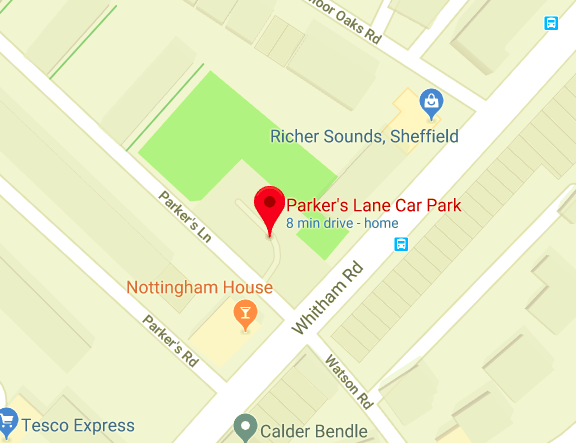

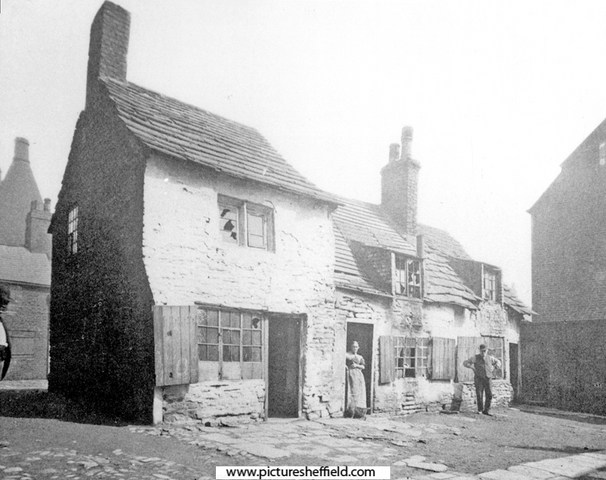
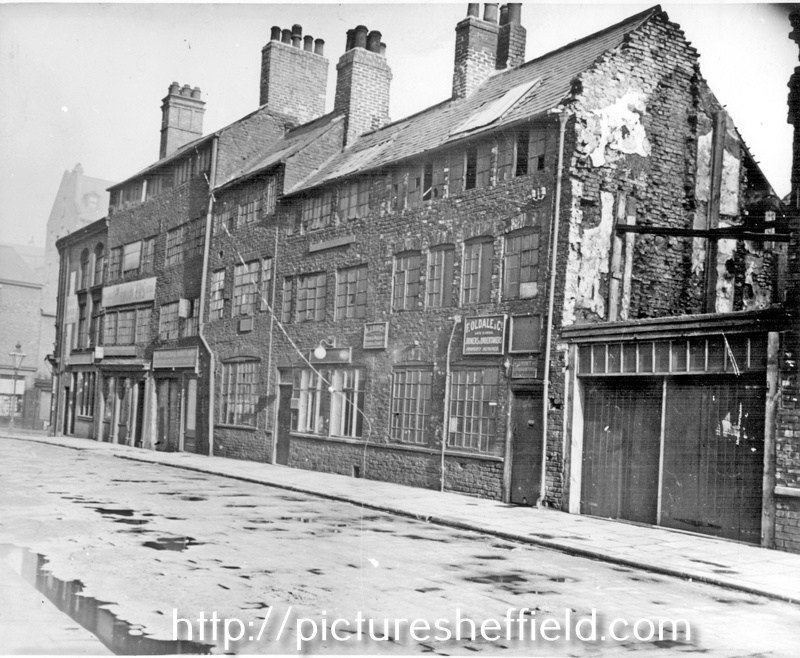
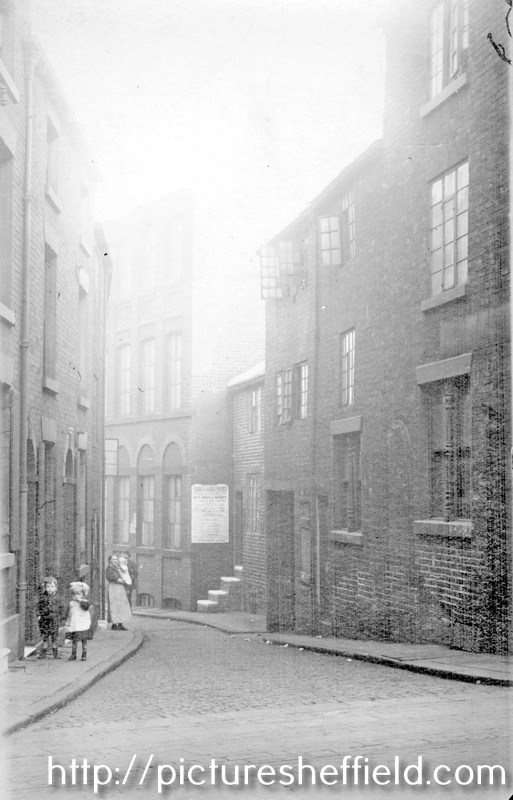
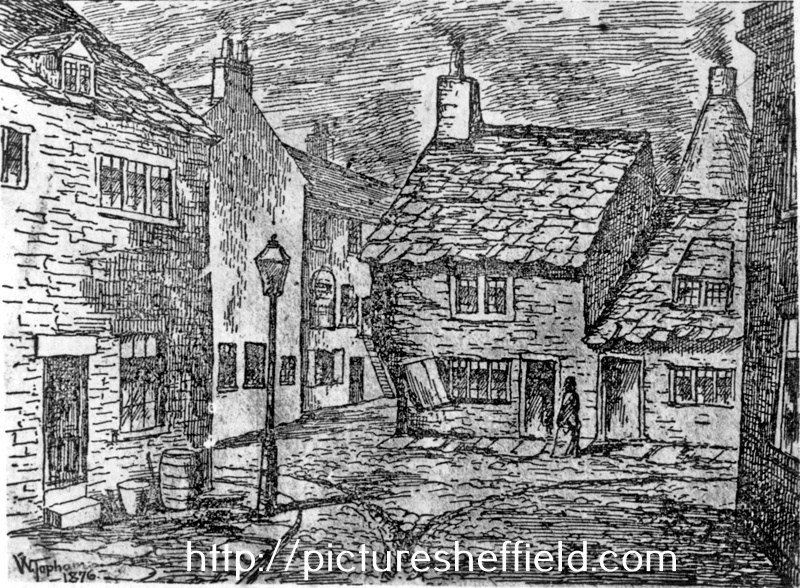
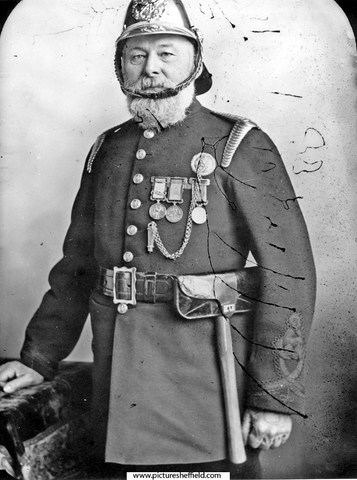
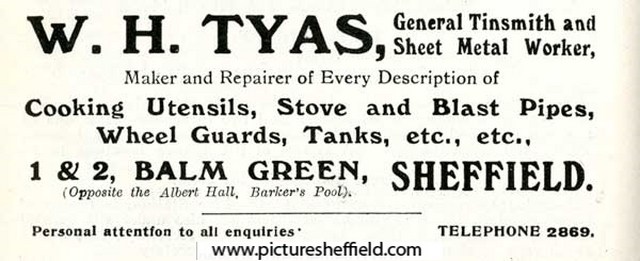
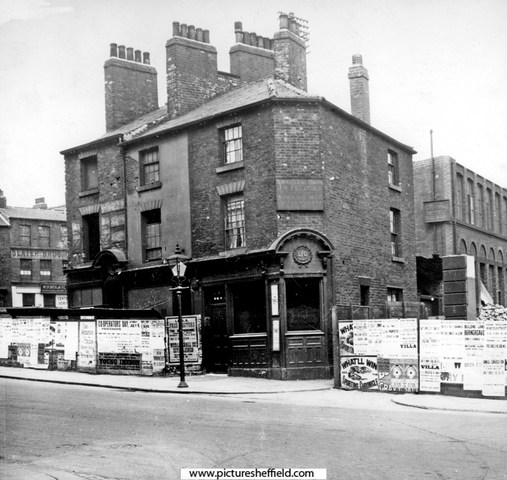
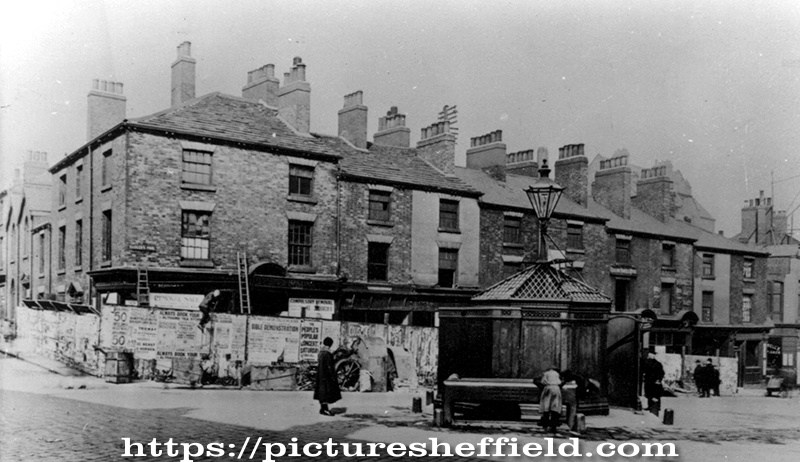
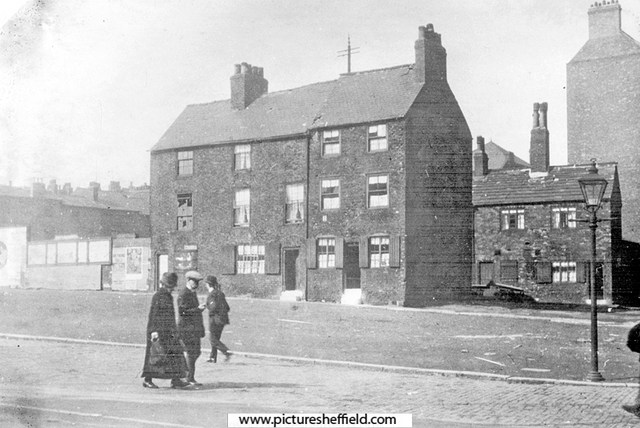
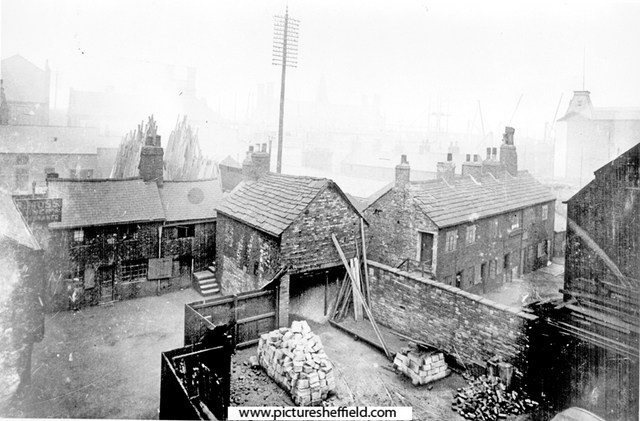
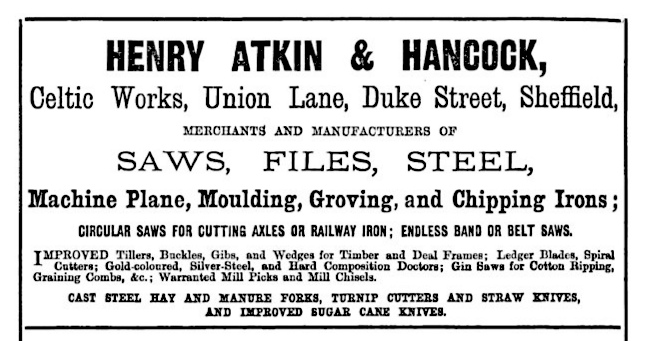
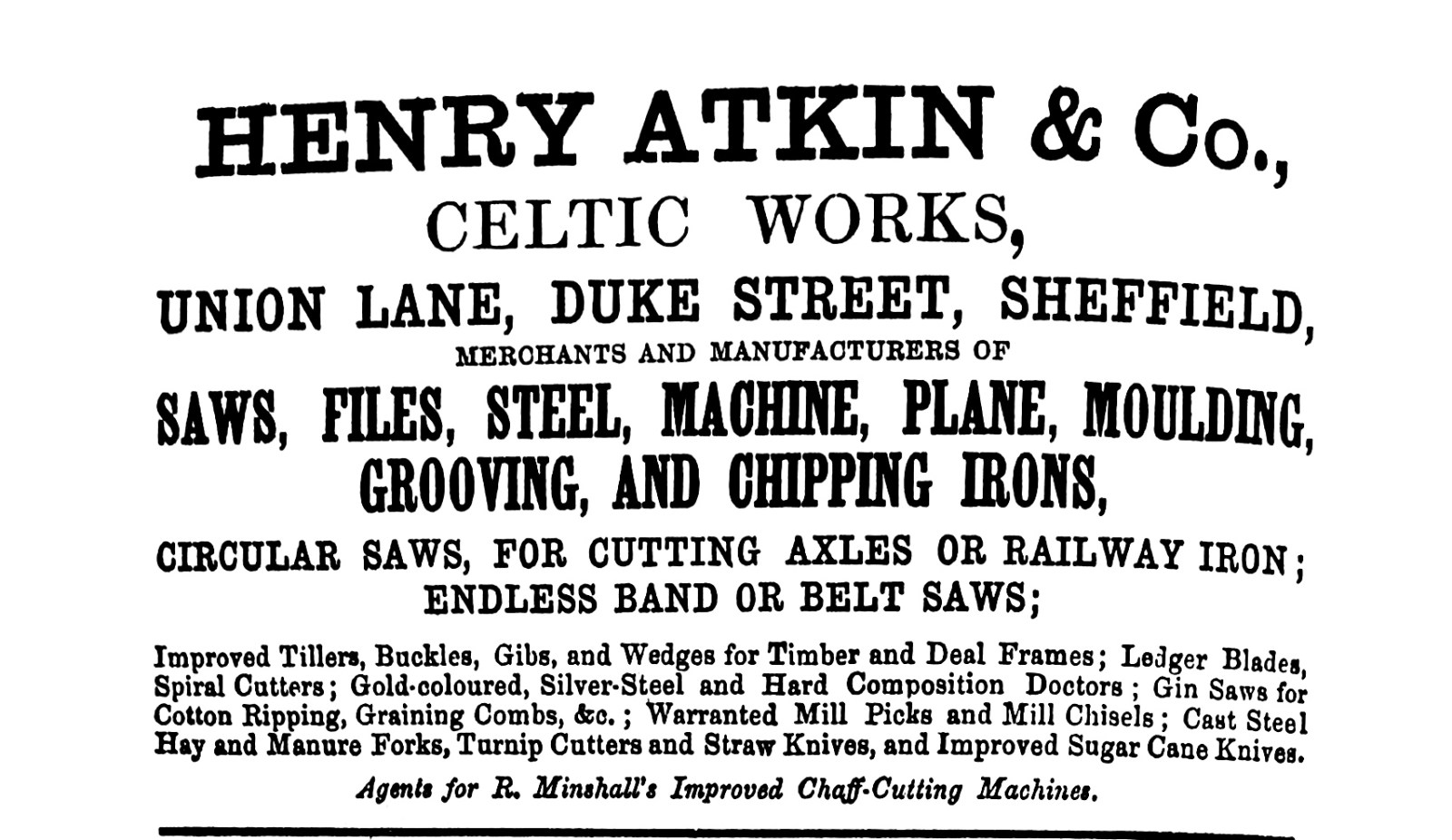
.jpg.f181336a358ea7e7b87d02e696e455b9.jpg)
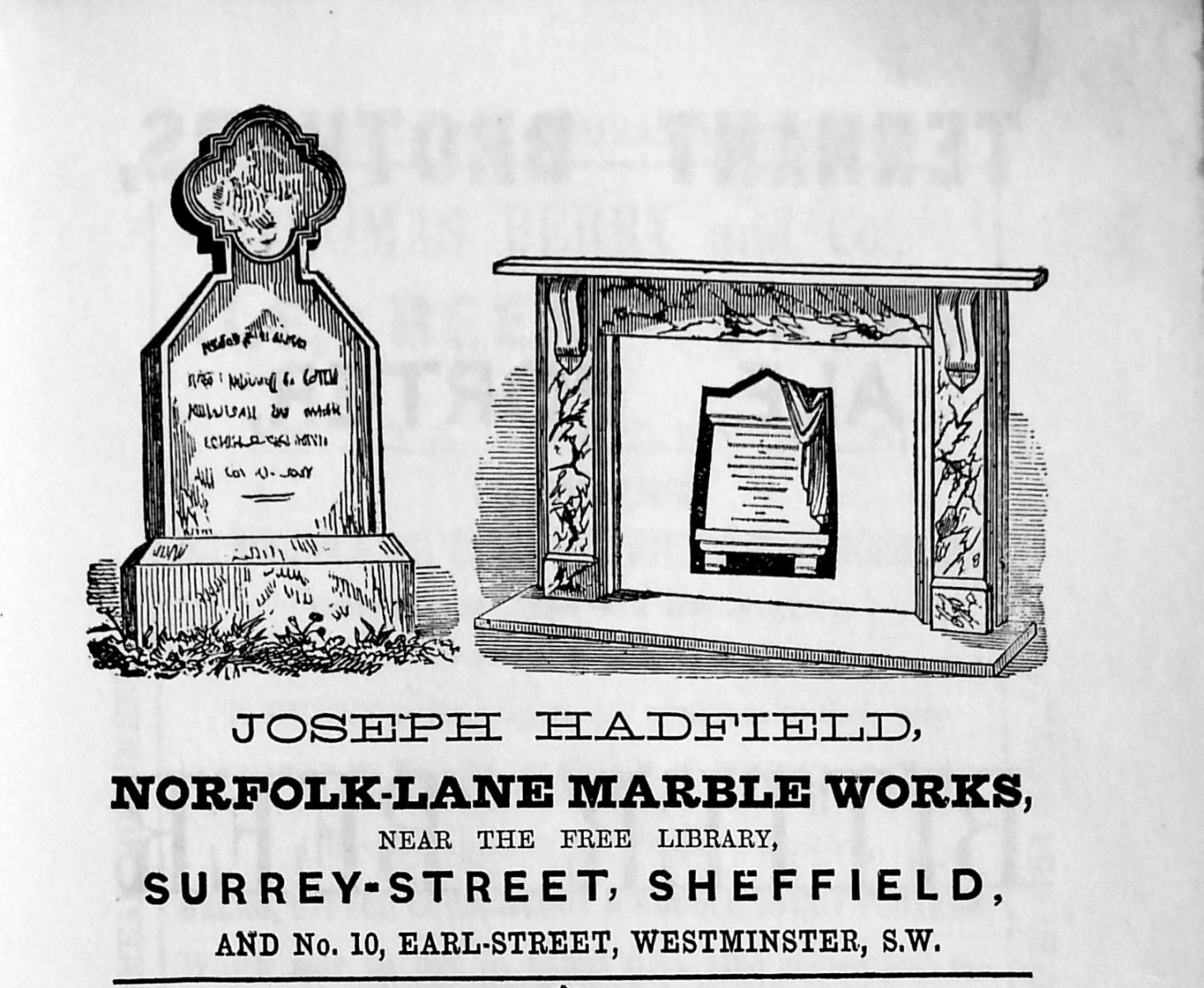
.thumb.png.8060304900e2765a780a729f4c4541a4.png)
